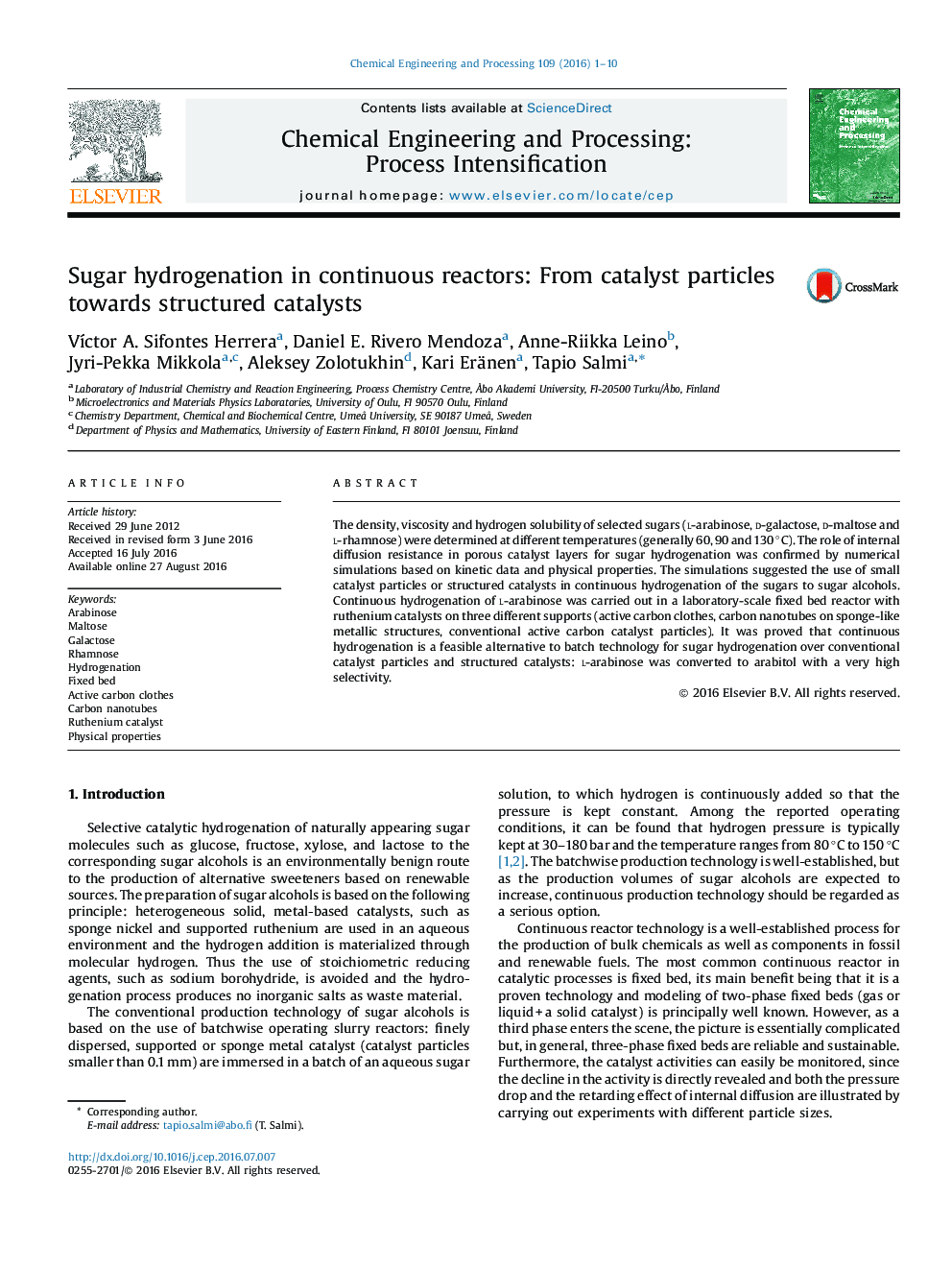| Article ID | Journal | Published Year | Pages | File Type |
|---|---|---|---|---|
| 4998357 | Chemical Engineering and Processing: Process Intensification | 2016 | 10 Pages |
Abstract
The density, viscosity and hydrogen solubility of selected sugars (l-arabinose, d-galactose, d-maltose and l-rhamnose) were determined at different temperatures (generally 60, 90 and 130 °C). The role of internal diffusion resistance in porous catalyst layers for sugar hydrogenation was confirmed by numerical simulations based on kinetic data and physical properties. The simulations suggested the use of small catalyst particles or structured catalysts in continuous hydrogenation of the sugars to sugar alcohols. Continuous hydrogenation of l-arabinose was carried out in a laboratory-scale fixed bed reactor with ruthenium catalysts on three different supports (active carbon clothes, carbon nanotubes on sponge-like metallic structures, conventional active carbon catalyst particles). It was proved that continuous hydrogenation is a feasible alternative to batch technology for sugar hydrogenation over conventional catalyst particles and structured catalysts: l-arabinose was converted to arabitol with a very high selectivity.
Keywords
Related Topics
Physical Sciences and Engineering
Chemical Engineering
Process Chemistry and Technology
Authors
VÃctor A. Sifontes Herrera, Daniel E. Rivero Mendoza, Anne-Riikka Leino, Jyri-Pekka Mikkola, Aleksey Zolotukhin, Kari Eränen, Tapio Salmi,
